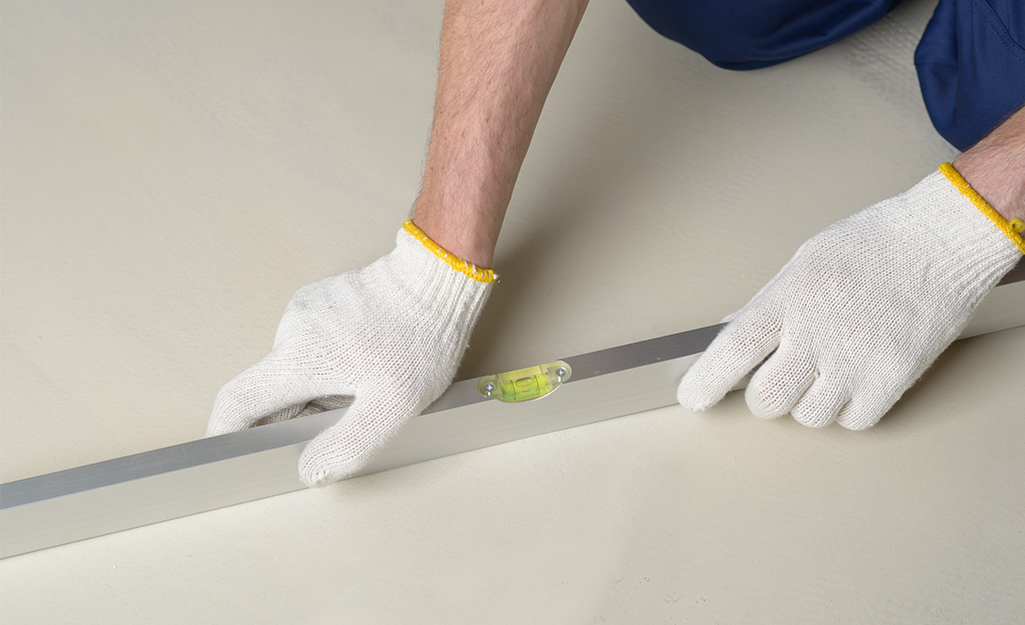
1. How durable are laminate floors?
Laminate flooring is long lasting and highly durable. The surface is made of
2. What are laminate floors and how are they made?
Laminate flooring is made by covering a High Density Fibre Board (HDF) with melamine impregnated paper. The HDF is sandwiched between the melamine papers and permanently bonded together under heat and pressure. The decorative paper image is designed from a photograph of wood. The layers of the laminate are: the wear layer, decorative paper/image, HDF core board and backing paper.
3. What is the difference between laminate flooring and hardwood flooring?
Both laminate flooring and hardwood flooring are made of wood, but are fundamentally different. Hardwood is wood in its natural form, cut and finished to be installed as a floor. Laminate is refined wood compressed together with a printed paper providing the visual. The advantages of laminate are that it has superior wear properties over hardwood and can be produced at a much lower cost. Laminate flooring’s durability is better as it is engineered to have excellent wear properties whereas hardwood flooring can be enhanced, but is generally limited to the natural properties of the wood. Hardwood can often suffer dents as well as changing colour with exposure to sunlight, unlike laminate. These are part of the natural characteristics of hardwood and can be part of the attraction of a natural product. Laminate flooring has great flexibility in design as any colour or design can be printed. Laminate can provide exotic wood looks, without the harvesting of rare, or potentially endangered species of wood.
4. How are laminate floors installed?
Laminate floors are installed as a floating floor, meaning that they are not actually connected to the subfloor. Laminates lay on top of the subfloor and are cut during installation to allow an expansion gap around the edge of the flooring installation. It is essential that an expansion space be left around the perimeter of the floor. This allows the floor to expand and contract with changes and humidity and temperature throughout the year.
5. Can laminate be installed in wet or damp areas?
It is not recommended to install laminate in any area of the home that will be consistently subject to high levels of moisture. Installation of laminate in wet locations, such as full bathrooms, rooms containing saunas, enclosed porches or verandahs, should not be used. Extended exposure to moisture can cause the core of the laminate flooring to swell and/or warp. When installing laminate in an area that could be subject to moisture, it is advisable to use a laminate flooring with waxed edges for additional moisture resistance.
6. Can a plank in the middle of the floor be replaced?
Yes it can. If a plank is damaged and needs replacement, there are two options. a) The floor can be uninstalled and reinstalled b) The plank can be cut, removed and replaced with a new board.
7. What is a laminate flooring AC Rating?
AC stands for Abrasion Class and is a wear rating that has been standardized by the North American Laminate Flooring Association. The AC Rating measures the abrasion resistance of the floor, which determines how well the floor will withstand day to day wear and tear. The AC Ratings range from 1 to 5. AC3 is the Industry standard for residential use. AC4 and AC5 are considered commercial for heavy traffic areas.
8. Can I change the gloss level of my laminate floor?
No. The appearance of the laminate floor is determined during manufacturing, when the top melamine surface is cured under heat. From this point on, it is a closed cell surface, it is robust and resists any type of surface alterations. It cannot be waxed, oiled, polished, sanded or altered in any way.
9. If I have allergies, is laminate flooring a good product?
Yes. Laminate flooring is a hard surface floor and is considered hypoallergenic. It’s closed cell surface means that there is limited ability to trap dust, dust mites and other allergy causing organisms. This can be very important for people suffering from asthma or dust allergies.
10. Are laminate floors suitable for wheelchair use?
Yes. Laminate flooring is suitable for wheelchair use. Caution should be taken to remove any sharp debris that could be embedded in the rubber of the wheels, as this could cause scratching of the floor.
For any enquiries on our flooring products or services, please fill in the contact form or call us directly. One of our helpful, friendly team will be happy to assist you.